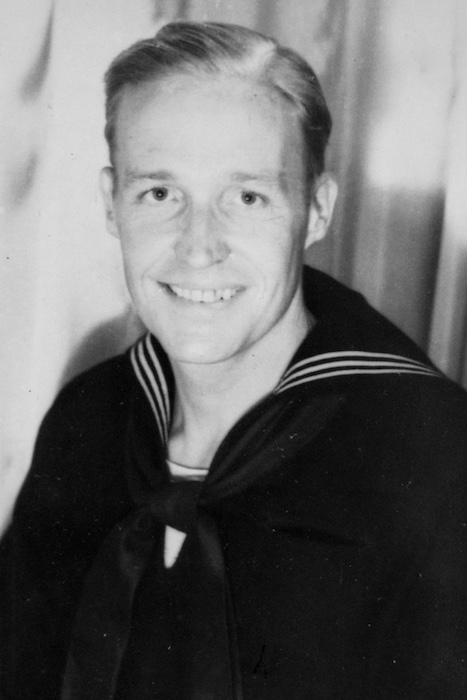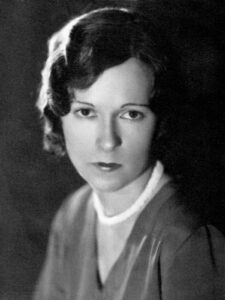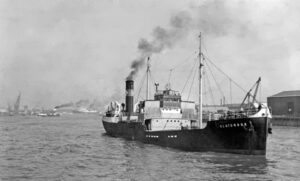Courtland registered for the draft in October 1940, being described as 6 feet 1 inches tall, weighing 175 lbs, with a light complexion and tattoos on each forearm and the calf of the right leg.
He enlisted into the US Navy Reserve on 27 February 1942, just a few weeks after the attack on Pearl Harbor. He was given service number 662-75-38 and after a period of training joined the crew of the USS Hopkins (DMS-13) on 17 June. This was a 20-year-old destroyer that had been converted into a fast minesweeper and was being overhauled.
USS Trever
After a few weeks he was transferred to sistership USS Trever (DMS-16). This old destroyer had been present at Pearl Harbor on 7 December 1941 and shot down at least one of the Japanese attackers. She spent the early part of 1942 being refitted with new anti-aircraft guns.
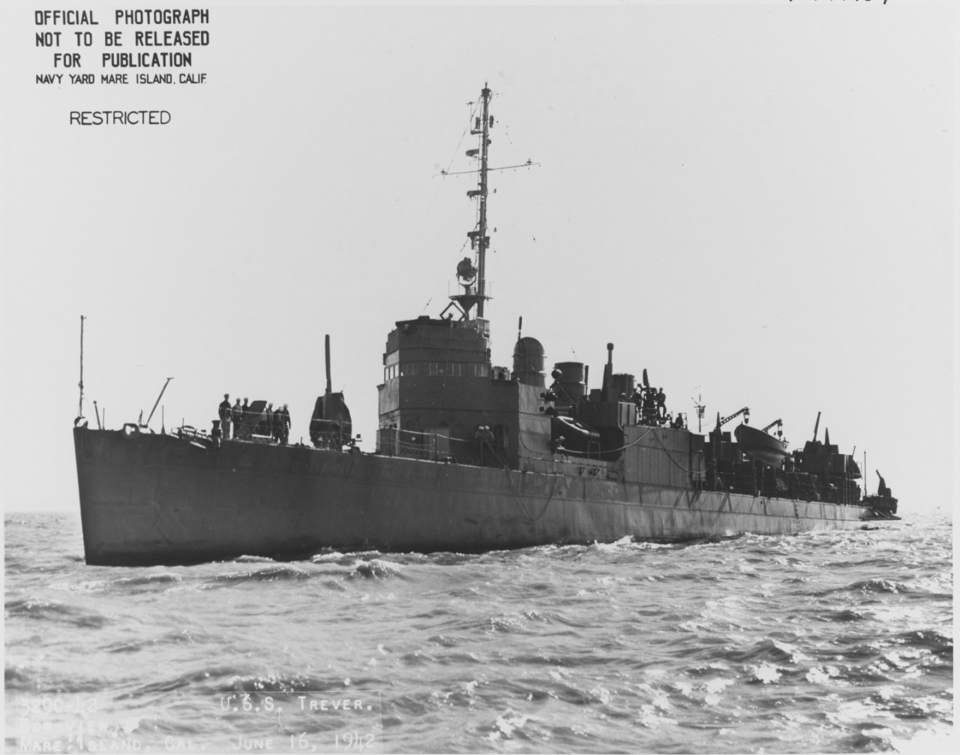
With its new crew onboard in June 1942, Trever sailed to participate in the first US amphibious assault of the war against the Solomon Islands with the aim of securing Guadalcanal. Arriving off Guadalcanal on 7 August, Trever’s role as a minesweeper was to sweep the area ahead of the invasion fleet for potential hazards. It then then joined the bombardment of a Japanese shore battery on the island of Gavutu, scoring a direct hit to silence the gun. Later, while conducting sweeping operations, Trever drove off Japanese bombers that attacked the transport ships. The bombers attacked again at noon the next day, but Trever quickly shot down four of the enemy.
On that same night a Japanese cruiser force conducted a surprise attack down the ‘slot’ between Guadalcanal and Savo Island. It surprised five Allied cruisers, and in what became known as the Battle of Savo Island sank four of them. However, the Japanese did not press their advantage and the vulnerable transports supporting the invasion escaped unscathed. Trevor helped to screen them as they withdrew to New Caledonia.
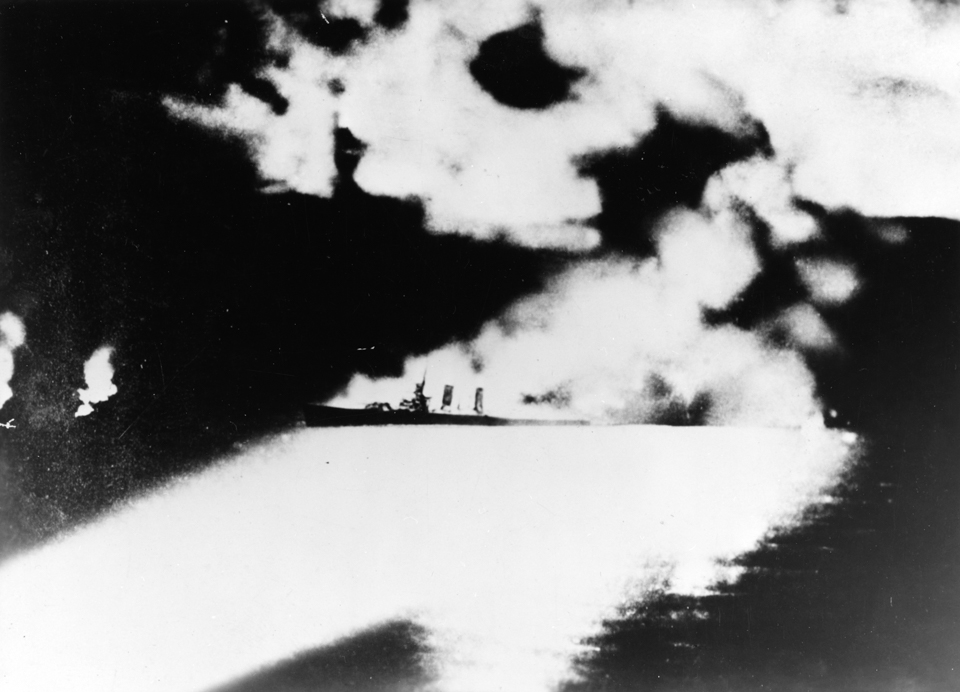
The invasion was subsequently supported by high-speed transports, and Trever itself was even used to ferry supplies. On 13 October Trever joined the search for survivors following the inconclusive Battle of Cape Esperance between Savo Island and Guadalcanal. It took on board 34 Japanese survivors, including three officers. One raft of eight refused to surrender and put up a fight, giving Trever no recourse but to destroy it and its occupants.
After completing another resupply mission, on 25 October, Trever and its partner USS Zane had been expecting orders to bombard Japanese positions along Guadalcanal’s coast. However, an intercepted message indicated that three Japanese destroyers were approaching to bombard the airstrip at Henderson Field on Guadalcanal. Accordingly, the ships attempted a dash for safety. At about 10am the two old destroyers accelerated as fast as possible to clear the area but 15 minutes later the Japanese destroyers came over the horizon and gained rapidly. They were able to open fire with their larger guns while still out of range of the American armament. The Japanese shooting was poor however and they managed only one hit on Zane before breaking off the action to continue with their primary mission.
After continuing resupply runs through January 1943, Trever steamed to Australia for overhaul, arriving at Sydney on 27 January 1943.
Transfer to minesweepers
Trever returned to the theatre on 28 February 1943. It was around this time that Courtland was promoted to Coxswain. He was transferred on 6 May 1943 to the USS YMS-97, which was a much smaller auxiliary motor minesweeper. Originally intended to be used to clear harbours of mines, they were used during the Pacific campaign for inshore sweeping to prepare the way for amphibious assaults.
Courtland was promoted to Sonarman Third Class (SoM3C) then to Sonarman Second Class (SoM2C) during his time onboard. He was part of the team that manned the sonar used to detect submerged mines. He was transferred to sistership YMS-122 on 29 June 1944. He saw out the rest of his war service onboard before being discharged on 31 August 1945.
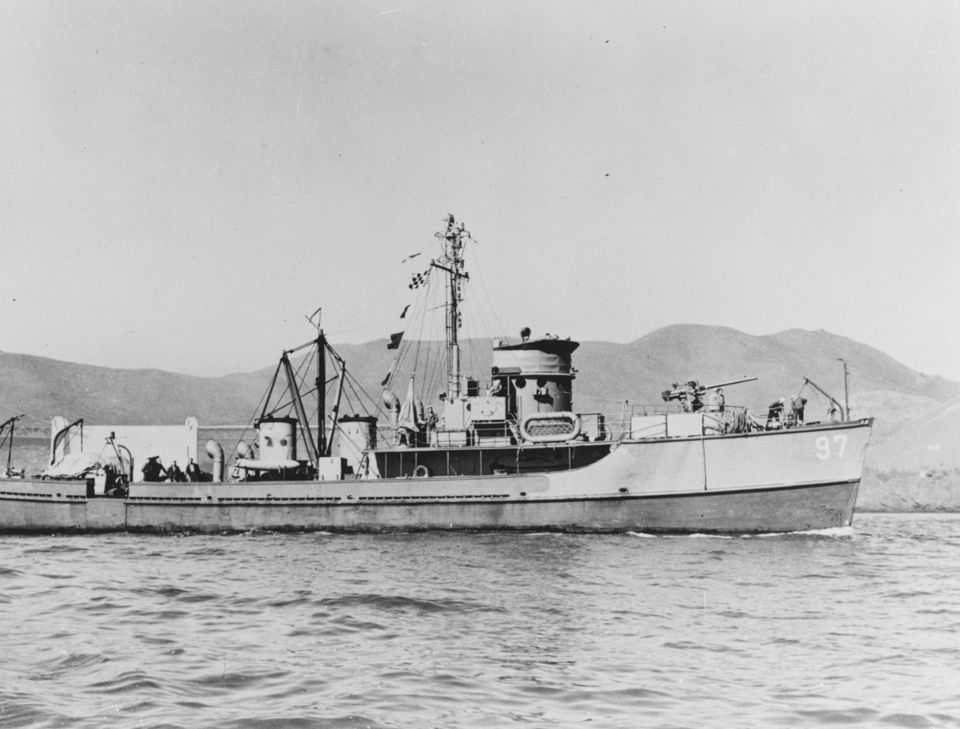
Earlier service?
There are a series of records for a Courtland W. Bunker who enlisted into the US Marines in January 1930 and then served with the 3rd Battalion, 4th Marines in Shanghai, China between 1930-1933 before joining the Reserves at San Francisco and Washington through to 1938. Despite the same unusual name, it seems odd that upon the outbreak of war someone who was an experienced US Marine and a member of the reserves would enlist into the Navy rather than being recalled back to that service. There is also an enlistment record for another Courtland W. Bunker who joined the US Army with service number 39375487 on 17 February 1941. This Courtland was born in Montana in 1911, divorced, and worked in a sawmill – almost certainly the same person.
Ships
- USS Hopkins (1942)
- USS Trever (1942-1943)
- USS YMS-97 (1943-1944)
- USS YMS-122 (1944-1945)

